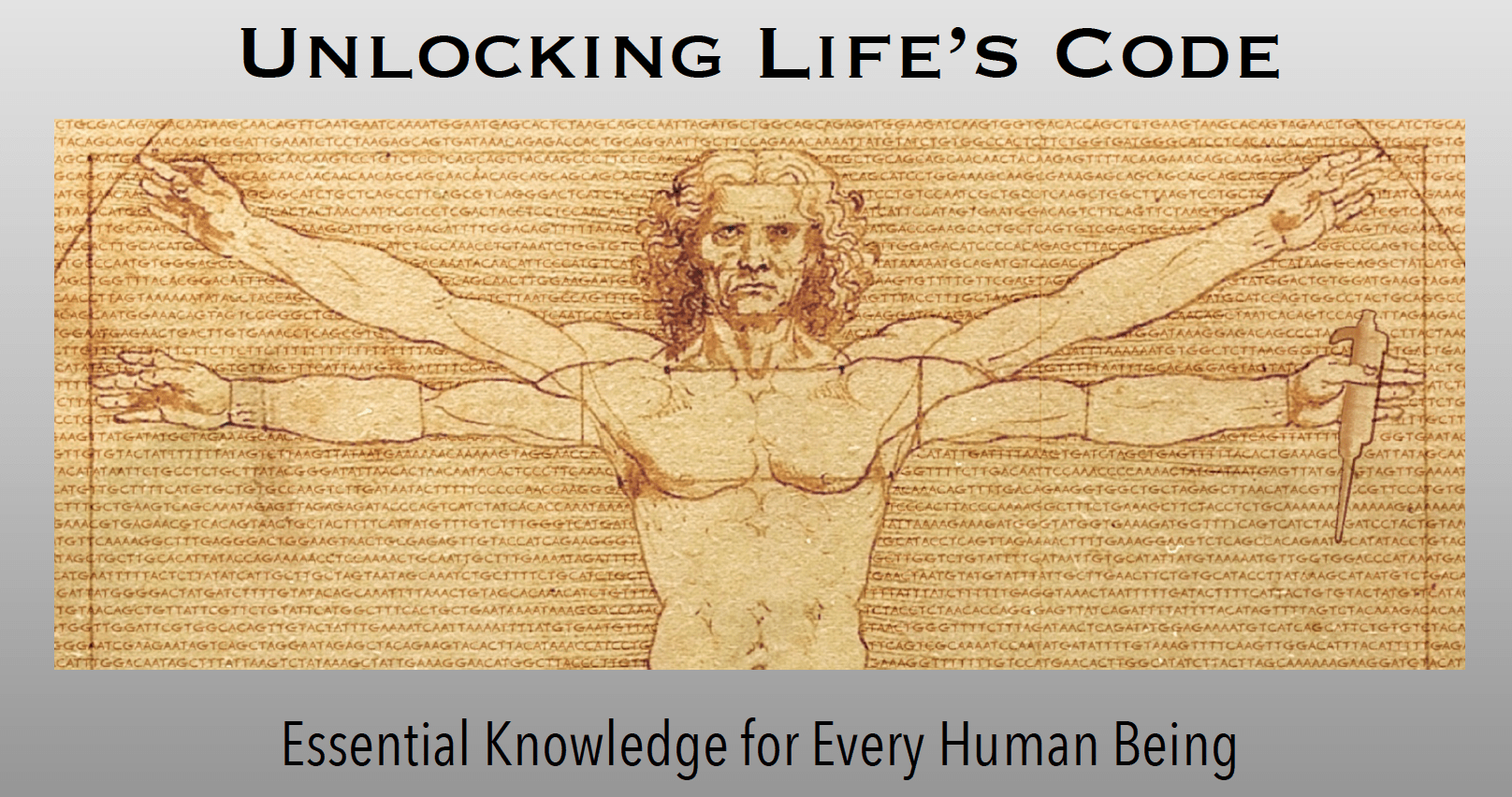As a step toward identifying opportunities to develop, in Auckland schools, educational initiatives that explore genomics, GIM held a STEM outreach focused symposium at the University of Auckland’s Faculty of Medical and Health Sciences (FMHS) on April 5th 2018. A number of current science partnerships with Auckland schools were presented by teachers, academics and non-profit STEM educational organizations. As discussed in our white paper – titled Genomics Into Schools (see download link below) – the conversations at this symposium galvanised GIM’s school education efforts around the development of resources teachers can use with students in the 10-15 year old age bracket. This is a formative time of a young person’s development when they formulate ideas about future career paths.
GIM has developed this classroom poster, suitable for Year 7-10 students, to provide an overview of the relationship between DNA structure, its organization into chromosomes in the nucleus, and its role in coding for proteins that contribute to specific functions of cells in an animal. In this particular case, the focus is on the protein haemoglobin, found in the red blood cells of the zebrafish.
A high-resolution image (5mb pdf) suitable for printing at A0 size can be obtained below by clicking the link below the picture. Printing at A0 size would reproduce the correct “actual size” of the zebrafish circled in brown.
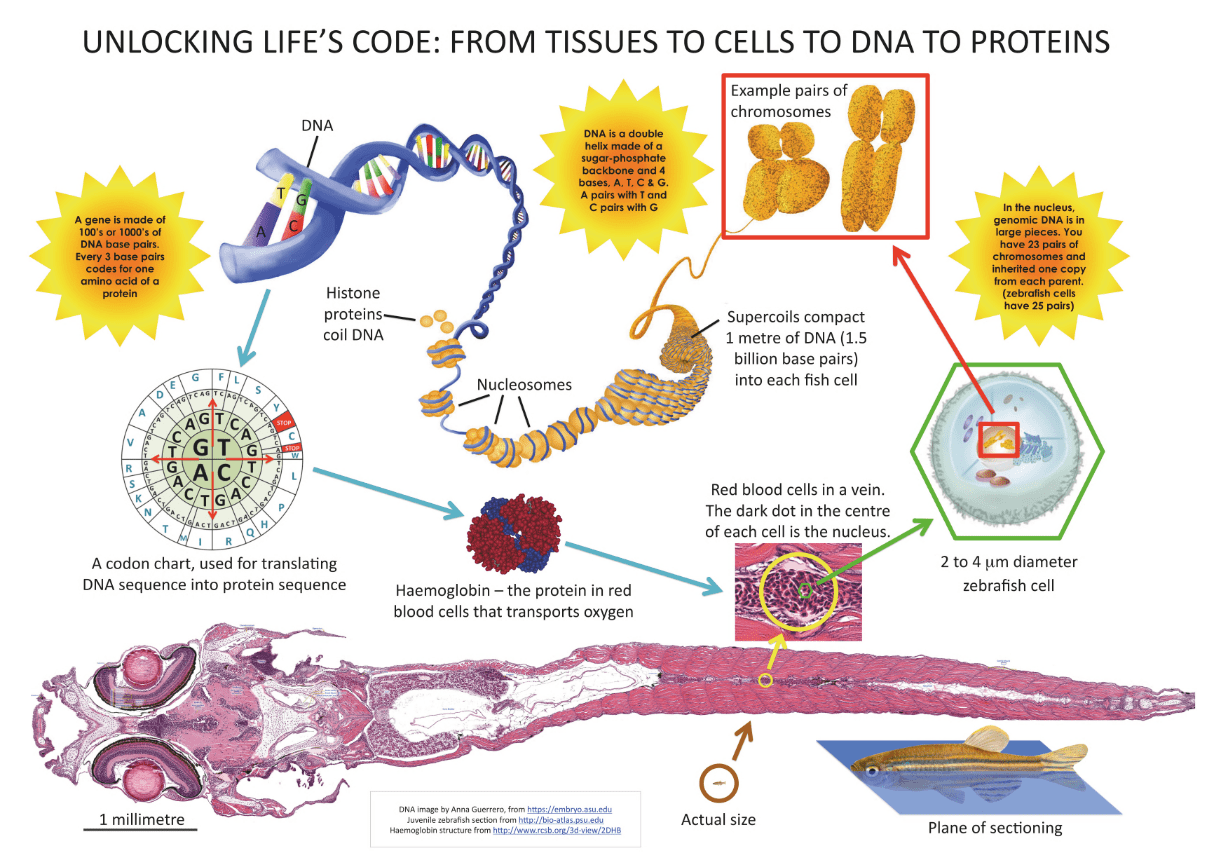
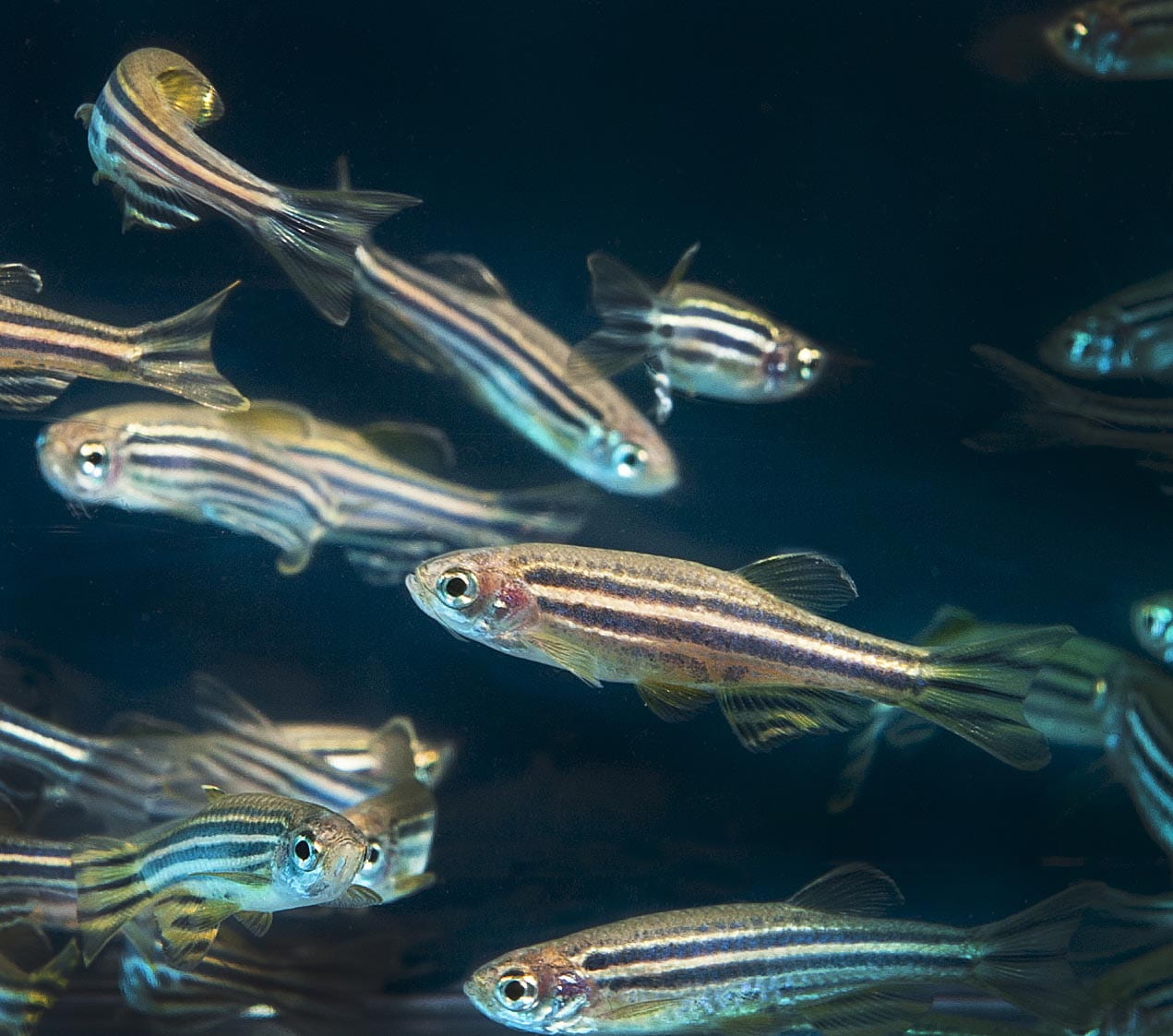
For students that are new to microscopic and sub-microscopic aspects of biology, a useful starting point for investigating the make-up of multicellular organisms is to look at microscopy slides of pre-prepared animal and plant tissues or, even better, to additionally make some slides of their own, by staining cheek cells from the inside of their mouth or by staining onion cells. However, many students do not have access to microscopes. The guide provided at the link below gives instructions on how to navigate through an online zebrafish atlas used by researchers to explore the anatomy of developing zebrafish at cellular resolution.
In 2019 and 2020, Genomics Into Medicine received funding from the MBIE-supported SouthSci initiative to develop a genomics-oriented learning programme for Year 7&8 students in the Manaiakalani Community of Learning in the Tāmaki/Glen Innes area of Auckland. Schools taking part in this project included Point England School, Glenbrae School, Glen Innes School, Saint Pius X and Tāmaki Primary School. Other important collaborators on this project were Jannie van Hees (Languaging Minds) and Kim Handley and two of her Doctoral students from the School of Biological at the University of Auckland. A key part of this project was to engage students in an environmental DNA project, sampling the water of the Ōmaru River that runs through Glen Innes and using DNA sequence information to identify the wide range of organisms that inhabit the awa and surrounding area. The project was showcased at the COMET Auckland display at the 2021 MOTAT science fair. The poster shown below summarised the project for kids visiting the MOTAT fair, where they were also able to use microscopes to examine live protists and other microorganisms and also learn a little about DNA sequencing using the Oxford Nanopore Technologies MinION platform.
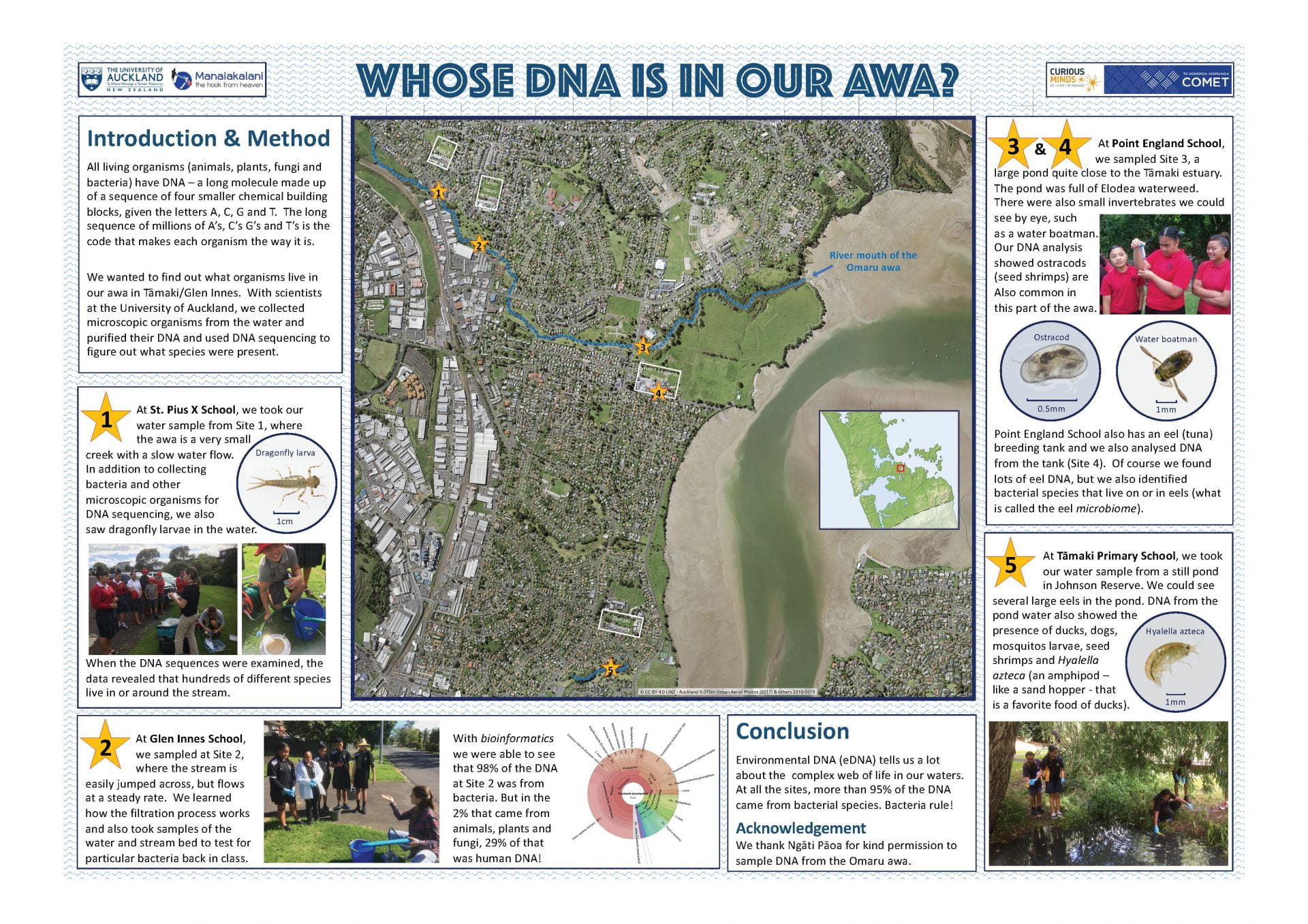
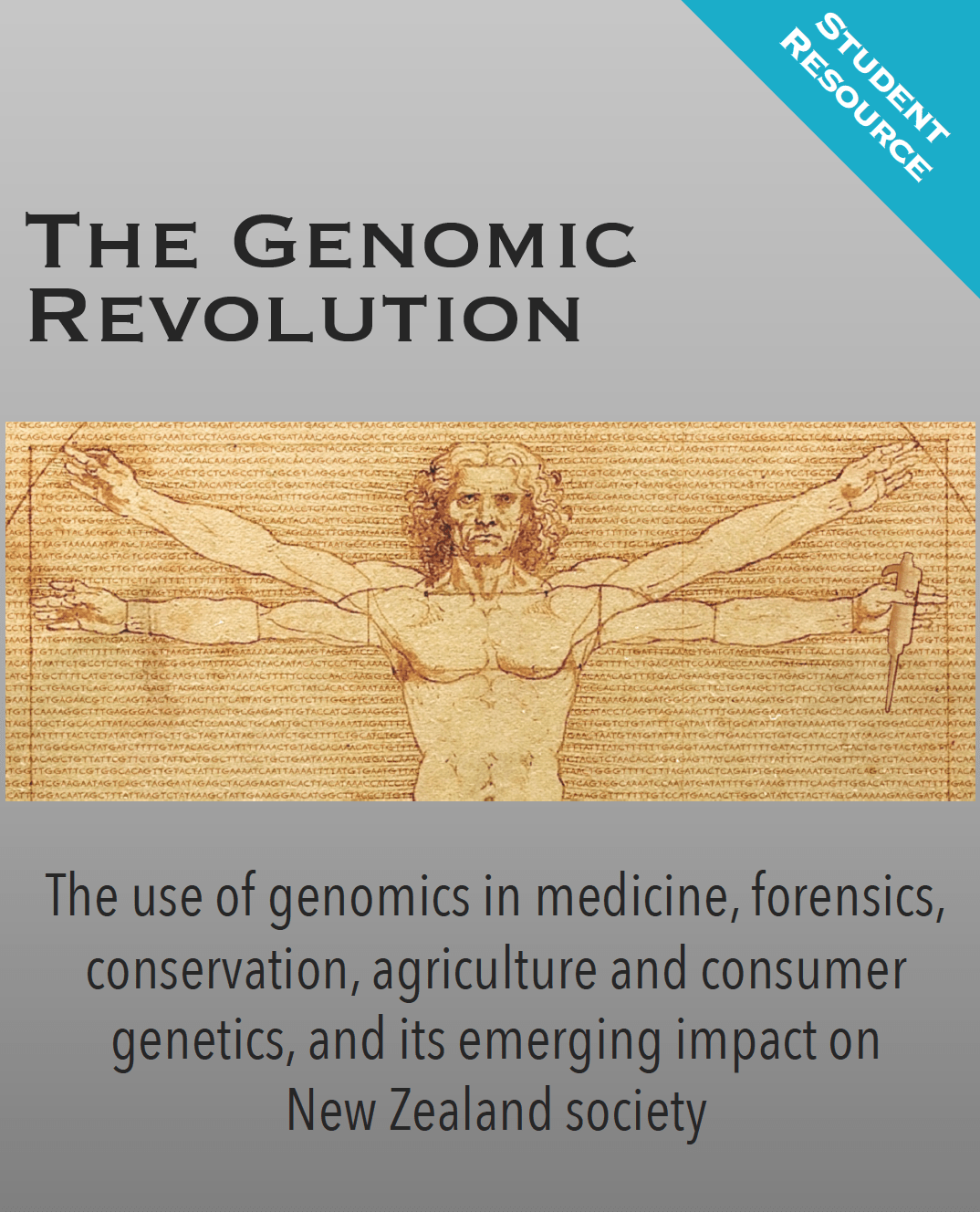
Suitable for senior secondary school students, teachers, citizen scientists and other members of the public, The Genomic Revolution provides a broad introduction to the use of genomics across an array of biological disciplines. The resource also covers many of the landmark discoveries in the history of DNA research as well as key technological developments over the past two decades that have fuelled a revolution in genetic/genomic science.
As with other revolutions, profound societal and ethical questions arise from our increased knowledge about the genomes of humans and other organisms, and from the methods that have been developed to manipulate genomic DNA in vivo. The Genomic Revolution was developed explicitly to illuminate these issues, especially as they apply to Aotearoa/New Zealand.
In addition to over 200 clickable links to supporting videos and news items, the resource also includes a glossary of technical terms to make the information more accessible.
Suitable for middle and secondary school students (depending on how far through this resource teachers take them), Unlocking Life’s Code provides an easy introduction into how the 20,000 to 25,000 human genes code for the myriad proteins that support every moment and every aspect of our lives. This resource starts very simply and, with teacher support, the first 21 pages may be suitable for middle school students (NZ Yr 7-10, ages ~11-14). The resource is a fillable pdf and for optimal use should be viewed and filled using Adobe Acrobat Reader DC (free to download for Mac or PC). For simplicity, details of the process of translation are largely skipped over. Clickable links (and QR codes) provide access to supporting videos. Mendelian genetics is covered, but more importantly the resource includes information and activities to support an understanding of polygenic genetics and epigenetics, which would benefit senior secondary school students. Two crosswords are also provided to support learning. A teacher’s version of this resource, with additional information and answers included is available on request.

